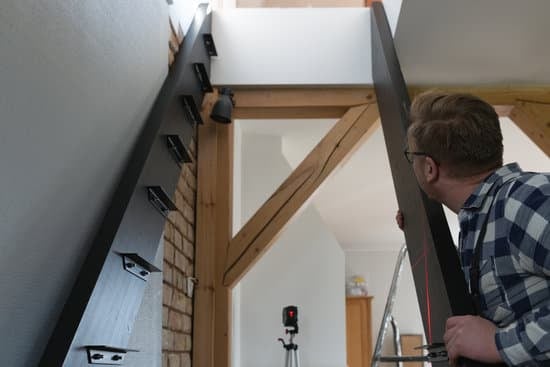Looking to make some upgrades to your home but don’t have the funds on hand? This article will delve into what consists of a home improvement loan and how it can help you achieve your renovation dreams.
When it comes to home improvement projects, the costs can quickly add up, which is where a home improvement loan comes in. In this section, we will explore the different types of home improvement loans available, including personal loans, home equity loans, and home equity lines of credit.
Before diving into the world of home improvement loans, it’s important to understand how to qualify for one. We’ll discuss the various requirements lenders may have, such as credit score, income, and existing debt. Additionally, we’ll touch on understanding the interest rates and terms associated with these loans to ensure you are well-informed before making any decisions.
As you continue reading through this article, you will gain insights into choosing the right lender for a home improvement loan and the process of applying for one. We’ll also highlight the importance of having a detailed project plan in place and provide tips on effectively managing the funds from a home improvement loan.
Exploring Different Types of Home Improvement Loans
When it comes to home improvement loans, there are a variety of options available to homeowners. Understanding the different types of home improvement loans can help individuals choose the option that best suits their needs and financial situation. Here are some of the most common types of home improvement loans:
- Personal Loans: These unsecured loans can be used for a variety of purposes, including home improvements. They typically have higher interest rates but provide borrowers with the flexibility to use the funds as they see fit.
- Home Equity Loans: This type of loan allows homeowners to borrow against the equity in their homes. Home equity loans typically have lower interest rates and longer repayment terms, making them an attractive option for larger home improvement projects.
- Home Equity Line of Credit (HELOC): Similar to a home equity loan, a HELOC allows homeowners to borrow against their home’s equity. However, HELOCs function more like a credit card, giving homeowners access to a line of credit that can be drawn from as needed.
It’s important for individuals to carefully consider their options and choose the type of home improvement loan that aligns with their specific needs and financial goals. Each type of loan has its own advantages and disadvantages, so it’s crucial to conduct thorough research and consult with financial experts before making a decision on what consists of a home improvement Ioann.
In addition to these traditional loan options, there are also government-backed loans and energy-efficient mortgages available for those looking to make eco-friendly upgrades to their homes. By exploring different types of home improvement loans, homeowners can find the right financing solution for their renovation or remodeling projects.
How to Qualify for a Home Improvement Loan
A home improvement loan can provide the funding you need to make renovations or updates to your home. Qualifying for a home improvement loan is an important step in accessing these funds. Lenders have specific requirements that you must meet in order to be approved for a loan. Here’s what consists of a home improvement Ioann and how you can qualify for it.
First and foremost, your credit score will be a significant factor in determining whether you qualify for a home improvement loan. Lenders prefer to see a good credit score, typically 620 or higher, as it shows that you have a history of managing debt responsibly. A higher credit score may also lead to more favorable interest rates on your loan.
In addition to your credit score, lenders will also look at your income and employment history. They want to ensure that you have a stable source of income that will allow you to make consistent payments on the loan. Providing proof of employment and income, such as pay stubs or tax returns, will be necessary during the application process.
Another important factor in qualifying for a home improvement loan is the amount of equity you have in your home. Lenders may require that you have a certain amount of equity built up in your home before they approve you for a loan. Equity is the difference between the current market value of your home and the remaining balance on your mortgage.
| Factors | Qualification Requirements |
|---|---|
| Credit Score | Typically 620 or higher; shows responsible debt management |
| Income and Employment History | Stable source of income; proof required during application process |
| Equity in Home | Lenders may require certain amount of equity built up before approval |
Understanding the Interest Rates and Terms of a Home Improvement Loan
When considering a home improvement loan, it is crucial to have a clear understanding of the interest rates and terms associated with it. This will help you make informed decisions and avoid any surprises in the future. Here are some key points to consider:
- Interest Rates: Home improvement loans can have fixed or variable interest rates. A fixed interest rate remains the same throughout the loan term, while a variable interest rate may fluctuate based on market conditions. It’s important to weigh the pros and cons of each option and choose one that aligns with your financial goals.
- Loan Terms: The loan term refers to the duration for which you will be repaying the loan. Shorter loan terms typically come with higher monthly payments but lower overall interest costs, while longer loan terms offer lower monthly payments but may result in higher total interest paid over time.
- Additional Fees: In addition to interest rates, home improvement loans may come with other fees such as origination fees, prepayment penalties, and late payment fees. Be sure to carefully review all the associated costs before committing to a loan.
By understanding these aspects of a home improvement loan, you can make an informed decision about which option best suits your needs and financial situation. Additionally, it’s advisable to consult with a financial advisor or lender for personalized guidance on navigating through these complexities.
- Research Different Lenders: Compare offers from various lenders to find the most competitive interest rates and favorable terms.
- Review Loan Documents Carefully: Before finalizing a home improvement loan, thoroughly review all documents including the Truth in Lending disclosure which outlines key loan details such as annual percentage rate (APR), total finance charges, and repayment schedule.
- Maintain Good Credit: Your credit score plays a significant role in determining the interest rate you qualify for. Prioritize improving your creditworthiness before applying for a home improvement loan.
Ultimately, being well-informed about the interest rates and terms of a home improvement loan is essential for making sound financial decisions and achieving successful project outcomes.
Tips for Choosing the Right Lender for a Home Improvement Loan
When considering a home improvement loan, one of the most important decisions you will make is choosing the right lender. The lender you choose can have a significant impact on your overall loan experience and the success of your home improvement project. Here are some tips for selecting the right lender for your home improvement loan.
Research Different Lenders
Before making a decision, it’s crucial to research and compare different lenders offering home improvement loans. Look into banks, credit unions, online lenders, and other financial institutions to see what options are available. Consider factors such as interest rates, fees, customer reviews, and customer service offerings.
Consider Your Financial Situation
When choosing a lender, consider your own financial situation and needs. Different lenders may have varying requirements for credit scores, income levels, and existing debt. It’s essential to find a lender that aligns with your financial situation and can offer terms that work for you.
Check for Specialized Home Improvement Loan Programs
Some lenders offer specialized home improvement loan programs with specific benefits tailored for renovation projects. These programs may include features such as flexible repayment terms or discounted interest rates for energy-efficient upgrades. Researching these specialized programs can help you find a lender that best suits your home improvement needs.
By following these tips and taking the time to thoroughly research potential lenders, you can ensure that you find the right fit for your home improvement loan needs. Choosing the right lender is an important step in the process of securing funding for your renovation project.
The Process of Applying for a Home Improvement Loan
Applying for a home improvement loan involves several important steps. Whether it’s for renovating your kitchen, adding a new bathroom, or making essential repairs, a home improvement loan can provide the funds you need to make these improvements.
Gather Necessary Information
Before applying for a home improvement loan, it’s essential to gather all the necessary information that lenders will require. This may include income verification, credit history, employment details and documentation of the planned home improvements. Being organized and prepared with this information can help expedite the application process.
Research Lenders and Loan Options
One of the crucial steps in applying for a home improvement loan is researching different lenders and loan options. It’s important to compare interest rates, loan terms, fees, and any other relevant factors. Different lenders offer different types of loans such as personal loans, home equity loans, or home equity lines of credit (HELOC), so it’s important to choose the one that best fits your financial situation and needs.
Submit Your Application
Once you’ve gathered all necessary information and have chosen the right lender and loan option for you, it’s time to submit your application. This typically involves filling out an application form and providing all required documentation. Some lenders may also require an appraisal of your property to determine its current value.
By following these steps in the process of applying for a home improvement loan, you can position yourself for success in obtaining the funds needed to make your desired improvements.
The Importance of a Detailed Project Plan for a Home Improvement Loan
When considering a home improvement loan, it’s crucial to have a detailed project plan in place. This not only helps you understand the scope of the work that needs to be done but also assists in effectively managing the funds from the loan. A detailed project plan should outline the specific areas of your home that require improvement and detail the estimated cost for each aspect of the project.
To help you better understand the importance of a detailed project plan for a home improvement loan, here are some key elements to include in your plan:
- Scope of work: Clearly define the areas of your home that need improvement, whether it’s the kitchen, bathroom, roof, or other aspects.
- Cost estimates: Provide a breakdown of the estimated costs for labor, materials, and any additional expenses related to the project.
- Timeline: Outline a realistic timeline for completing each phase of the project, taking into account any potential delays.
A well-thought-out project plan not only demonstrates your preparedness to lenders but also serves as a roadmap for your home improvement project. It ensures that you stay on track with your budget and schedule while keeping all stakeholders informed about the progress and expectations. Ultimately, having a detailed project plan can increase your chances of securing a home improvement loan and successfully executing your renovation or remodeling plans.
How to Effectively Manage the Funds From a Home Improvement Loan
When it comes to managing the funds from a home improvement loan, it’s important to be strategic in order to make the most out of your investment. Here are some key tips for effectively managing the funds from a home improvement loan:
Create a Detailed Budget
Before you start spending the funds from your home improvement loan, it’s crucial to create a detailed budget outlining how much money will be allocated to each aspect of the project. This will help you stay organized and ensure that the funds are being used efficiently.
Prioritize Essential Upgrades
When deciding where to allocate the funds, prioritize essential upgrades that will add value to your home. This could include things like structural repairs, energy-efficient upgrades, or improvements that increase the functionality of your living space. By focusing on these essential upgrades first, you can ensure that the funds are being used towards meaningful investments.
Track Expenses
It’s important to track all expenses related to the home improvement project. This will not only help you stay within your budget but also allow you to see where the money is being spent. By keeping a close eye on expenses, you can make adjustments as needed and avoid overspending.
By effectively managing the funds from a home improvement loan, you can maximize the impact of your investment and ensure that your project is completed successfully. Taking a strategic approach to fund management will not only help you achieve your desired results but also give you peace of mind throughout the home improvement process.
Success Stories and Case Studies of Using a Home Improvement Loan
Many homeowners have successfully used home improvement loans to transform their properties and increase their value. One such success story is that of the Johnson family, who utilized a home improvement loan to renovate their outdated kitchen and bathrooms.
The loan allowed them to upgrade their appliances, install new fixtures, and create a more modern and functional living space. As a result, the value of their home increased significantly, and they were able to recoup the cost of the loan when they eventually sold the property.
In another case study, the Garcia family used a home improvement loan to add an extension to their home. This allowed them to create an additional bedroom and bathroom, making their house more spacious and suitable for their growing family. The loan provided them with the funds needed to hire contractors, purchase materials, and complete the construction work. As a result, they were able to enjoy a larger and more comfortable living space without having to deplete their savings.
These success stories highlight how a home improvement loan can be used effectively to enhance a property’s value and functionality. By investing in key areas of their homes, these families were able not only to improve their quality of life but also to see a significant return on investment when it came time to sell.
It is essential for homeowners considering similar projects funded by loans what consists of a home improvement Ioann in terms of eligibility requirements, interest rates, qualification process etc. before embarking on such endeavors.
| Homeowner | Improvement Made |
|---|---|
| Johnson Family | Kitchen & bathroom renovation |
| Garcia Family | House extension |
Mistakes to Avoid When Considering a Home Improvement Loan
When considering a home improvement loan, there are certain mistakes that homeowners should avoid in order to make the most out of their financing. One common mistake is underestimating the true cost of the project. Many homeowners fail to factor in unexpected expenses and end up borrowing less than they actually need, leading to incomplete or subpar renovations. It is important to thoroughly assess the scope of the project and create a detailed budget outlining all potential costs.
Another mistake to avoid is rushing into a loan without comparing different lenders and their terms. Each lender may offer different interest rates, repayment terms, and fees, so it is crucial to shop around and compare offers before committing to a loan. Failing to do so could result in higher interest payments and overall costs over the life of the loan.
Furthermore, one must be cautious about borrowing more than they can comfortably afford. While it may be tempting to take out a larger loan for extensive renovations, it is important for homeowners to realistically evaluate their financial situation and only borrow what they can manage to repay. Overextending oneself financially could lead to future money problems and even potential foreclosure.
Lastly, failing to have a well thought out project plan can also be a critical mistake when considering a home improvement loan. Without a detailed plan in place, there may be confusion regarding how the funds should be allocated, which could result in overspending or wasting resources.
Overall, by avoiding these mistakes when considering a home improvement loan, homeowners can ensure that their renovation projects are completed successfully within budget and with minimal financial stress.
| Mistake | Impact |
|---|---|
| Underestimating project cost | Incomplete or subpar renovations |
| Not comparing lenders | Higher interest payments |
| Borrowing too much | Financial strain and potential foreclosure |
Conclusion
In conclusion, a home improvement loan can be a valuable tool for homeowners looking to make necessary upgrades or renovations to their property. Whether it’s for essential repairs, increasing the value of the home, or simply making necessary updates, a home improvement loan can provide the financial assistance needed to complete these projects. However, it’s important to carefully consider whether this type of loan is right for you and your specific circumstances.
Before deciding on a home improvement loan, it’s crucial to thoroughly assess your financial situation and the scope of the project you have in mind. Consider factors such as your credit score, income stability, and the estimated cost of the renovations. Additionally, take into account the potential return on investment for the improvements you plan to make.
When considering a home improvement loan, be sure to research and compare different types of loans and lenders available. Understand the terms and interest rates associated with each option and choose a lender that best suits your needs. It’s also important to have a detailed project plan in place before applying for a loan to ensure that you have a clear understanding of what consists of a home improvement ioann.
Ultimately, whether or not a home improvement loan is right for you will depend on your individual circumstances and goals. By carefully considering all aspects outlined in this article and using caution when approaching this financial decision, you can determine if taking out a home improvement loan aligns with your short-term and long-term plans as a homeowner.
Frequently Asked Questions
What Does Home Improvement Entail?
Home improvement entails making changes or upgrades to a home in order to enhance its appearance, functionality, or value. This can include projects like remodeling a kitchen or bathroom, adding new flooring, or updating the home’s exterior.
What Is the Most Common Home Renovation?
The most common home renovation is probably the kitchen. Many homeowners opt to renovate their kitchens to modernize the space, improve functionality, and increase the value of their home. Kitchen renovations often involve replacing cabinets, countertops, and appliances.
Is Cal Really Al’s Brother?
No, Cal is not Al’s brother. This question seems to be referring to a popular television show from the 90s called “Home Improvement” where Tim Allen played a character named Tim “The Toolman” Taylor and his sidekick was named Al Borland. However, Al’s brother was never mentioned in the show.

I’m thrilled to have you here as a part of the Remodeling Top community. This is where my journey as an architect and remodeling enthusiast intersects with your passion for transforming houses into dream homes.





